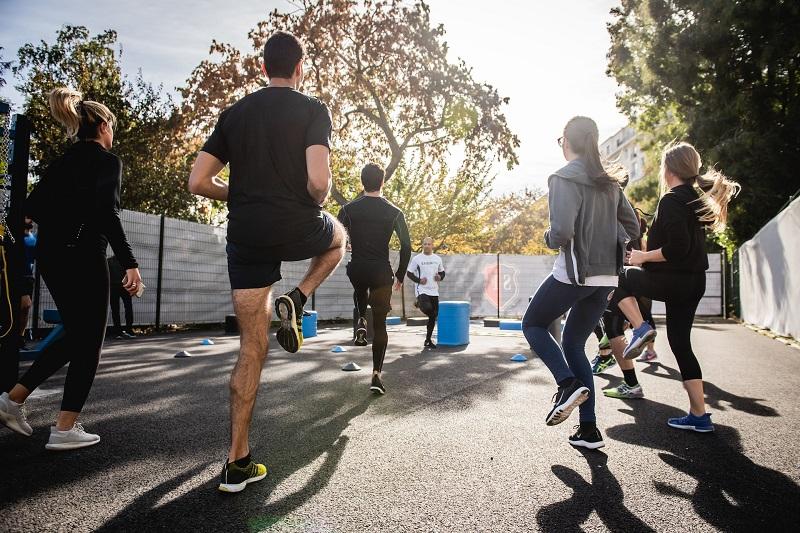Crafting Your Personalized Exercise Plan: Steps to Success
Oct 03, 2023
We all know that staying active is essential for our well-being. But with so many exercises and workouts available, where does one start? If you've ever found yourself overwhelmed or without a clear direction, don't worry. It's entirely normal. The key is to have a well-structured exercise plan. So, let's get into how you can build a plan that meets your needs and fitness goals.
Why Bother with an Exercise Plan?
Before we jump into the how-to, it's crucial to understand why planning exercise is beneficial.
- Consistency: Having a plan ensures you're not skipping workouts, especially on those days when motivation might be low.
- Structure: It provides a clear direction, meaning no wasted time wondering what to do next.
- Progress Tracking: A plan allows you to measure your improvements over time.
- Prevention of Overtraining: Following a balanced plan reduces the risk of overexertion and injury.
Getting Started: Know Your Goals
The first step in crafting an exercise plan is defining what you want to achieve. Your goals could range from weight loss, muscle gain, improving endurance, or merely staying active.
- Short-term Goals: These can be weekly or monthly targets. An example could be jogging continuously for 15 minutes or doing 20 push-ups without a break.
- Long-term Goals: These might span several months or even a year. It might involve losing a certain amount of weight or running a marathon.
The Basics of Planning Exercise

1. Warm-Up
Every exercise session should start with a warm-up. Warming up prepares your body for the more rigorous activity that's to come and reduces the risk of injuries.
- Duration: About 5-10 minutes.
- Activities: Brisk walking, light jogging, or jumping jacks.
2. Main Exercise
Based on your goal, this is where the primary activity happens. Here's a basic structure:
- Cardiovascular Exercise: If your goal is weight loss or improved endurance, incorporate running, cycling, or swimming.
- Strength Training: If muscle gain is your target, focus on weightlifting or resistance exercises. Remember to target different muscle groups on different days for a balanced approach.
- Flexibility and Balance: Incorporate yoga or Pilates to improve flexibility and balance.
3. Cool Down
Always end your planning exercise session with a cool-down phase.
- Duration: About 5-10 minutes.
- Activities: Light walking or stretching exercises.
Create a Weekly Schedule
Now that you understand the basics, lay them out in a weekly format. A sample exercise plan for a beginner might look like:
- Monday: Cardio (30 minutes of brisk walking)
- Tuesday: Strength training (Legs and abs focus)
- Wednesday: Rest or light yoga
- Thursday: Cardio (15 minutes of jogging)
- Friday: Strength training (Arms and chest focus)
- Saturday: Flexibility (Yoga or Pilates)
- Sunday: Rest
Adjust and Review
It's essential to regularly review and adjust your plan. As you progress, your current routine might become less challenging. Revise your plan every 4-6 weeks.
Frequently Asked Questions
Why do I need an exercise plan?
Having an exercise plan can help keep you on track. It ensures you're consistent, offers a clear direction, lets you see your progress, and reduces the risk of overtraining.
How do I figure out my fitness goals?
Start by thinking about what you'd like to achieve in the short-term and long-term. This could be anything from losing weight, building muscle, running a marathon, or just staying active regularly.
What if the plan becomes too easy for me?
That's a good sign! It means you're making progress. It's crucial to review and adjust your plan every 4-6 weeks. As you become fitter, you can increase the intensity or try different workouts to challenge yourself.
Is it okay to skip the warm-up or cool down?
No, it's not recommended. Warming up prepares your body for exercise and reduces injury risk, while cooling down helps your heart rate return to normal and can minimize muscle stiffness.
How often should I change my exercise routine?
Ideally, review your routine every 4-6 weeks. You might need to make changes if you find the exercises too easy or too hard, or if you have new fitness goals.
Can I just do cardio exercises and skip strength training?
While cardio is great for heart health and burning calories, strength training helps build muscle, which can boost metabolism and provide a balanced fitness approach. It's beneficial to incorporate both in your routine.
Building an exercise plan might seem daunting initially, but once you have a structure, it's just a matter of sticking to it. Remember, it's all about taking small steps towards a healthier you. Your future self will thank you for the effort you put in today!





